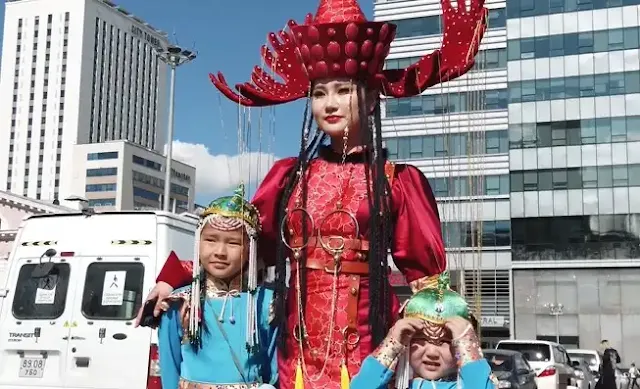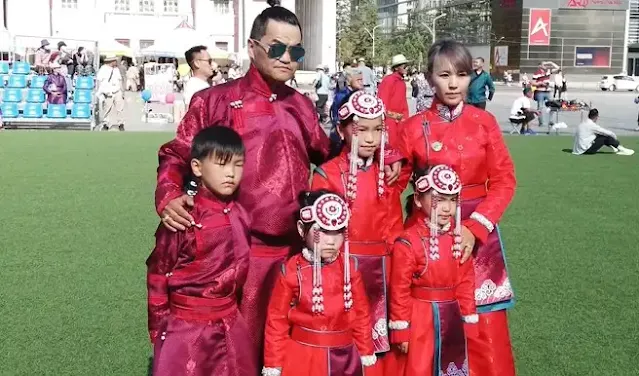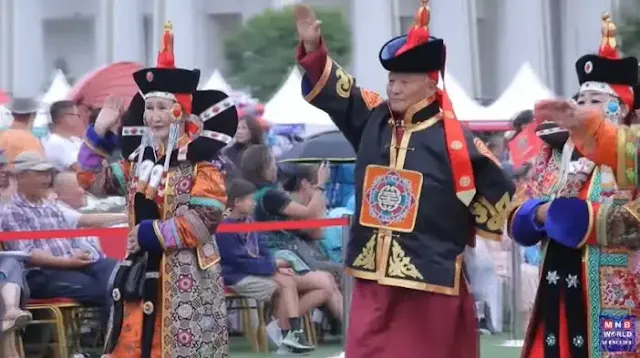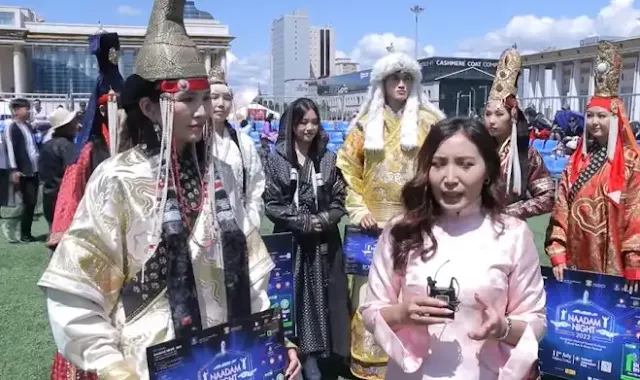Introduction
Mongolian traditional clothes, also known as "deel," hold a significant place in the rich cultural heritage of Mongolia. These garments reflect the country's history and nomadic lifestyle and showcase its distinct identity and sense of tradition. The deel is more than just a piece of clothing; it represents the essence of Mongolian culture and symbolizes national pride.
Moreover, the appeal of Mongolian traditional clothes extends beyond national borders. In recent years, there has been a growing interest in these garments globally due to their aesthetic value and unique design elements. Fashion designers worldwide have incorporated elements inspired by the deel into their collections, spreading awareness about Mongolia's rich cultural heritage.
However, it is crucial to recognize the importance of respecting and understanding the cultural context when adopting aspects of another culture's traditional clothing. Appropriation must have proper acknowledgment to avoid misrepresentation or dilution of meaning.
History
The deel has been worn by Mongolians for centuries, with its origins dating back to the time of Genghis Khan. It was designed to meet the practical needs of nomads living on vast grasslands, with its loose-fitting style allowing ease of movement while riding horses or herding livestock. Even today, the deal remains functional attire for many Mongolians who continue to lead a traditional way of life.
Characteristics
i. One notable feature of the deel is its distinctive design. It typically consists of a long robe-like garment from various fabrics such as silk, cotton, or wool. The cut is gender-specific: men wear a straight-cut deel called "zodog," which reaches down to their calves, while women wear a flared version called "togtokh", which falls below their knees. Both styles share common elements like wide sleeves and high collars.
ii. The intricate patterns in Mongolian traditional clothes convey deeper meanings related to nature, spirituality, and symbolism. Traditional motifs often include depictions inspired by animals such as horses or snow leopards - creatures deeply revered in Mongolian culture due to their association with strength and resilience in harsh environments.
iii. The colors used in these patterns have symbolic significance too. Red has historically been associated with power and bravery; blue represents eternity; yellow symbolizes wealth; green signifies fertility; white embodies purity and innocence; black evokes mystery and protection against evil spirits.
iv. Another remarkable aspect of wearing traditional clothes is how they contribute to preserving Mongolia's cultural heritage through generations. The deel is donned on special occasions or festivals and integrated into everyday life for many Mongolians, particularly those living in rural areas. This practice serves as a reminder of their ancestral roots and acts as a means of passing down traditions to younger generations.
v. Despite the influences of modernity and globalization, the deel holds its significance in contemporary Mongolia. It has become a national identity and cultural pride symbol, often worn with great reverence during important ceremonies and celebrations such as weddings or traditional festivals like Naadam.
Mongolian traditional clothes male
Mongolia, a vast landlocked country in East Asia, is well-known for its rich cultural heritage and unique traditions. One of the most intriguing aspects of Mongolian culture is its traditional clothing, which holds significant historical and cultural value. In particular, in male attire, Mongolian traditional clothes showcase intricate designs, vibrant colors, and a deep connection to their nomadic lifestyle.
Deel
Traditional Mongolian male clothing consists of several distinct elements that come together to create a visually striking ensemble. The primary garment men wear is the "deel," which can be best described as a long robe-like coat. Made from various materials like silk or brocade, the deel typically features bright colors like red or blue with intricate patterns woven into the fabric.
The design of the deel reflects practicality and symbolism deeply rooted in Mongolian culture. It has been crafted to withstand harsh weather conditions in Mongolia's diverse landscapes – from scorching deserts to freezing tundras. The wide sleeves allow for ease of movement while horseback riding or engaging in daily activities on the steppe.
The front closure of the deel often includes buttons made from precious materials like silver or coral. These buttons serve a functional purpose and represent wealth and social status within Mongolian society. Additionally, decorative trims along the collar and cuffs enhance its aesthetic appeal.
Gutal
Another essential component of traditional male clothing in Mongolia is trousers called "gutal." These pants traditionally feature baggy legs with tight-fitting ankle cuffs made from leather or wool felt material called "shabi." A distinguishing characteristic of gutal trousers is their high waistline fastened using leather belts adorned with metal buckles intricately engraved with symbols representing various aspects of nature and spirituality.
Chukha
Footwear plays a crucial role in completing the traditional attire for men in Mongolia. Known as "chukha," these boots exhibit durability and comfort, perfect for traversing the rugged terrains of the Mongolian countryside. Chukha boots have a distinctive upturned toe, which helps prevent snow or sand from entering while providing stability when riding horses.
Khel
Accessories also contribute to the overall charm of Mongolian male clothing. A traditional " khel " hat is often worn to protect against extreme weather conditions. Made from deerskin and adorned with decorative elements such as feathers or metal ornaments, khel hats symbolize bravery and courage.
Furthermore, belts made from intricately woven silk or leather are functional accessories and status symbols, denoting wealth and social standing within Mongolian society. These belts often feature beautiful designs inspired by nature, animals, or mythical creatures.
The significance of traditional clothing in Mongolia extends beyond its aesthetic value; it serves as a cultural emblem representing pride in heritage and identity. Even today, many Mongolians take immense pride in wearing traditional clothes during festivals, celebrations, or formal occasions.
Mongolia's male traditional clothing reflects the country's nomadic lifestyle and deep connection to nature. The vibrant colors, intricate patterns, and durable materials used in crafting the garments reflect centuries-old traditions passed down through generations. Mongolians keep their rich history alive while embracing modernity by donning these elegant attire pieces with reverence and respect for their cultural roots.
Mongolian traditional clothes female
Mongolia, a land of rich cultural heritage, is known for its vibrant traditions and unique clothing styles. In particular, Mongolian traditional clothes for females showcase the country's deep-rooted customs and offer a glimpse into its fascinating history.
Deel
One prominent aspect of Mongolian traditional attire for females is the del (deel). The deel is a long-sleeved robe-like garment made from various fabrics such as silk or cotton. It typically has a loose-fitting design with broad shoulders and a narrow waistline. The length reaches down to the ankles and is often adorned with intricate patterns or embroidery.
The deel plays a significant role in Mongolian culture, serving functional and symbolic purposes. Historically designed to withstand Mongolia's harsh climate, it provides warmth during extreme weather conditions while allowing ease of movement for nomadic lifestyles. Additionally, the deel symbolizes social status and identity within communities.
Zodog
A distinguishing feature of female Mongolian traditional clothing is the colorful sash called "zodog." Worn around the waist over the deel adds vibrancy to the ensemble. The zodog enhances aesthetics and signifies personal style preferences or regional variations across Mongolia.
Khalkh gol
Another essential component of female attire in Mongolia is headwear. Traditional headdresses vary depending on occasion or marital status. Married women wear "khalkh gol", a hat decorated with beads- which symbolizes marital bliss and fertility. Unmarried girls commonly don floral headbands known as "kekhee."
Gutal
Footwear holds significance in completing Mongolian female outfits as well. Women traditionally wear boots called "gutal," crafted from leather or felt material to protect rugged terrains while maintaining comfort during long journeys.
It should be noted that even though Western influences have found their way into urban areas of Mongolia, the traditional clothing for women remains highly valued and preserved. Cultural festivals, celebrations, and weddings are occasions where these garments are proudly showcased.
The preservation of Mongolian traditional clothing is not solely limited to aesthetics but also serves as a testament to the country's heritage and identity. These garments reflect the nomadic lifestyle, resilience in adverse weather conditions, and cultural diversity across different regions of Mongolia.
Moreover, Mongolian traditional clothes for females foster a sense of community and shared history among individuals. They cultivate pride in one's roots while allowing present generations to connect with their ancestors' way of life.
Mongolia's traditional female attire is a remarkable example of how clothing can transcend mere fashion statements; it encapsulates history, culture, social significance, and functionality and plays a vital role in maintaining cultural identities within communities.
As we delve deeper into understanding Mongolian culture through its rich traditions, such as their unique female attire, it becomes evident that these customs act as links between past generations and present-day society. The vibrant colors, intricate designs, and functional elements have preserved Mongolia's distinct heritage for years.
Conclusion
Overall, Mongolian traditional clothes embody more than just fashion; they encapsulate centuries-old customs and traditions deeply rooted within Mongolian society. The deel is a practical garment for nomadic life and symbolizes Mongolia's distinct cultural identity. By celebrating these traditional clothes while preserving authenticity, we pay homage to one country's remarkable history while embracing diversity in our global community.














0 Comments